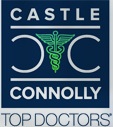What is Congenital Absence of the Patella?
Congenital absence of the patella is a rare condition in which the kneecap does not form or is abnormally small. It does not usually affect the functioning of the knee but may sometimes cause pain, deformity of the limb, and difficulty with movement. In most cases, if the quadriceps muscle and tendon at the front of the thigh are well developed, properly positioned, and active, there is little disability.
Though congenital absence of the patella may occur as an isolated defect, it is usually associated with other deformities or disorders such as nail-patella syndrome, in which absent or poorly-formed fingernails and defects of the elbow joint may be noted, along with other symptoms.
Symptoms
Congenital absence of the patella may be seen in one or both legs. It usually produces little functional disability when not associated with other deformities. Symptoms may include:
- Knee instability
- Flexion contracture (inability to straighten the knee)
- Difficulty walking or climbing stairs
- Severe injury to the knee after a fall
Congenital absence of the patella may also be associated with:
- Congenital dislocation of the knee
- Defects of the adjacent long bones
- Foot defects such as clubfoot
- Genu recurvatum (backward-bending knee)
Cause
Congenital absence of the patella associated with nail-patella defect is a dominant genetic disorder, so there is a high likelihood that a child will develop it if one of the parents has it. In some cases, it is seen in several family members.
Diagnosis
Your doctor will review your child’s medical history and perform a physical examination. Movement and strength of the knee joint are assessed. X-rays and MRI scans are obtained to visualize the area. Some patients show overdevelopment of the ends of the thighbone and shinbone at the knee to compensate for the absent patella.
Treatment
Treatment for congenital absence of the patella varies depending on the symptoms and age of the patient. Addressing defects such as dislocation of the knee is usually given priority. Massage, passive motion exercises, and electrical stimulation improve the strength and function of the quadriceps muscle which helps improve knee function. Quadriceps muscle and tendon surgery may be necessary. In some cases, osteotomy of the femur (thighbone) may be performed to straighten the leg.




 Book an Appointment
Book an Appointment
 Patient Portal
Patient Portal